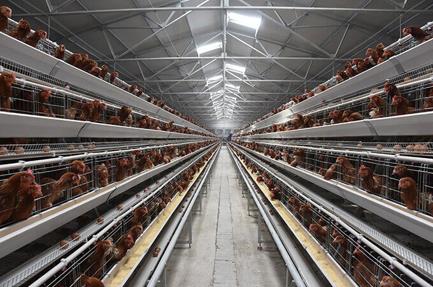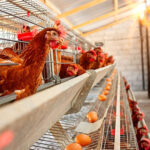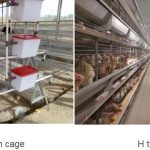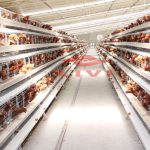Poultry battery cage systems, also known as battery cage poultry farming, have become highly efficient methods in the poultry industry. This system optimizes space and management, leading to improved productivity and economic benefits. Mastering the utilization of poultry battery cage systems is crucial for poultry farmers striving for success.
In this guide, we will delve into the world of poultry battery cage systems and provide you with practical techniques. We will explore the design and layout of battery cages, environmental management, feeding skills, and economic optimization. Whether you are a novice or an experienced poultry farmer, this guide will offer valuable insights to enhance your poultry business.
Let’s embark on this journey full of opportunities, exploring the essence of poultry battery cage systems to pave the way for a prosperous future in your poultry farming endeavors!

Practical poultry battery cage system design and space optimization
We will start from two aspects: customized design and intelligent modular construction. Make sure you have the best poultry battery cage system for you. Customized design is to meet the poultry needs and business scale of different customers. We will optimize the space layout according to your requirements to provide a comfortable living environment for the birds. At the same time, we adopt intelligent modular construction technology to simplify the assembly process. Allows you to easily adjust and expand your poultry facility, increasing efficiency and convenience.
Careful management of environmental quality is a key element in ensuring the success of a poultry battery cage system. First of all, it is important to ensure proper ventilation and climate control, using suitable ventilation equipment and systems to maintain fresh air circulation, regulate temperature and humidity, and provide a comfortable growing environment for birds.
Secondly, pay attention to water quality and drinking water management, regularly clean drinking water facilities, ensure the cleanliness and safety of drinking water sources, and improve poultry drinking water and production efficiency.
In addition, the bed should be replaced regularly to maintain a dry and clean environment to prevent the spread of disease and the growth of pathogens. Formulate effective emergency plans, understand disease prevention and control measures, detect potential disease risks early, and minimize the impact of environmental quality on poultry farming operations.
Through the use of modern environmental monitoring technology, real-time understanding of the environmental conditions in the poultry house and data analysis can help optimize management and improve production efficiency. With these practical steps, you will create good.
environmental management of the battery cage system
The environmental management of the battery cage system is a key measure to ensure the comfort, health and efficient production of laying hens in the breeding environment. Good environmental management not only helps to improve egg production rate and egg quality, but also reduces the risk of disease transmission, reduces mortality, and promotes the overall development of laying hens.
Maintaining proper temperature and ventilation are key factors in the environmental management of battery cage systems. Too high or too low temperature will affect the production performance and health of laying hens. Water quality is critical to the health and productivity of layer hens. Ensuring the hygiene and quality of drinking water sources is an important part of environmental management. Provide clean, fresh drinking water and avoid contamination.
Environmental management is key to ensuring the health and efficient production of layers in battery cage systems. Through comprehensive environmental management, battery cage system laying hen farming can achieve efficient and sustainable development.

Feeding skills of poultry cage system in the farm
In the farm of poultry cage system, in order to achieve healthy and efficient feeding, the following feeding skills need to be paid attention to. Reasonable dietary formula ensures that poultry obtain comprehensive and balanced nutrition, and promote their growth and production performance. Feeding at a fixed time and amount helps to maintain the metabolism and digestive function of poultry. It can also ensure the healthy growth of poultry and efficient egg production.
Clean and fresh drinking water should be provided in the farm to ensure that poultry have sufficient water at all times. In poultry cage systems, controlling feed waste is the key to reducing farming costs. Use proper feeders and feeders to avoid overfeeding and waste of feed.
These tips help ensure the health and performance of your poultry and promote a consistently high and sustainable farm. Through careful management and scientific feeding strategies, poultry cage system farms can obtain better economic benefits and breeding results.
Economic Benefits of Poultry Battery Cage Systems on the Farm
The application of poultry cage systems in farms has brought significant economic benefits to the poultry industry.
Efficient space utilization. The poultry cage system adopts a three-dimensional feeding structure to make full use of the space and effectively increase the poultry density. This means that within the same farm area, more poultry can be bred to increase production and thus achieve greater economic returns.
Enhanced Egg Production. The poultry cage system provides a comfortable and safe environment for laying hens, which is conducive to the growth and production of laying hens. By reducing external environmental disturbances and stress, the laying hen’s egg production rate is improved, thereby increasing the farm’s egg sales income.
Reduce the risk of disease transmission. The poultry cage system allows poultry to be kept relatively independently, reducing the contact between poultry and the risk of disease transmission. Healthy poultry helps reduce disease incidence and medication costs, thereby reducing the financial burden on farmers.
Application of automation technology. The poultry cage system can apply automation technology, such as automatic feeding, automatic egg collection, etc., which reduces labor costs. Automation technology improves production efficiency, reduces labor requirements, and saves time and human resources.
Strong market adaptability. Due to the flexibility of the poultry cage system, farmers can adjust the breeding scale and output according to market demand. This enables farmers to better respond to market changes and demand fluctuations, and to obtain more stable economic benefits.






